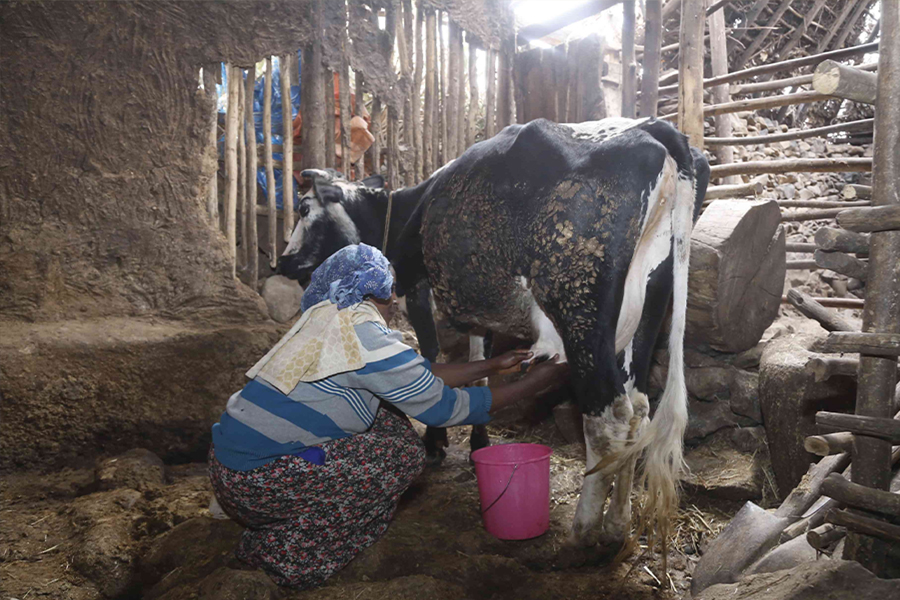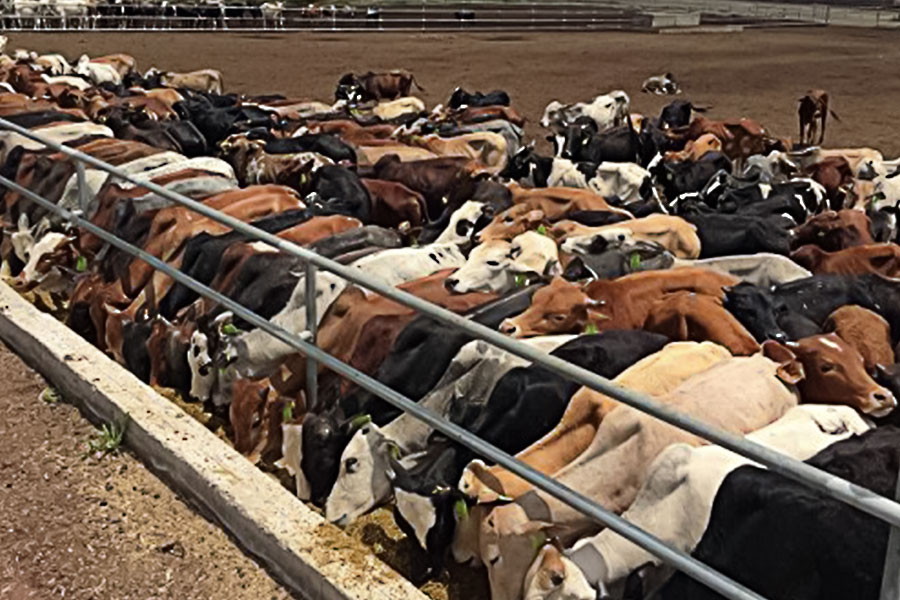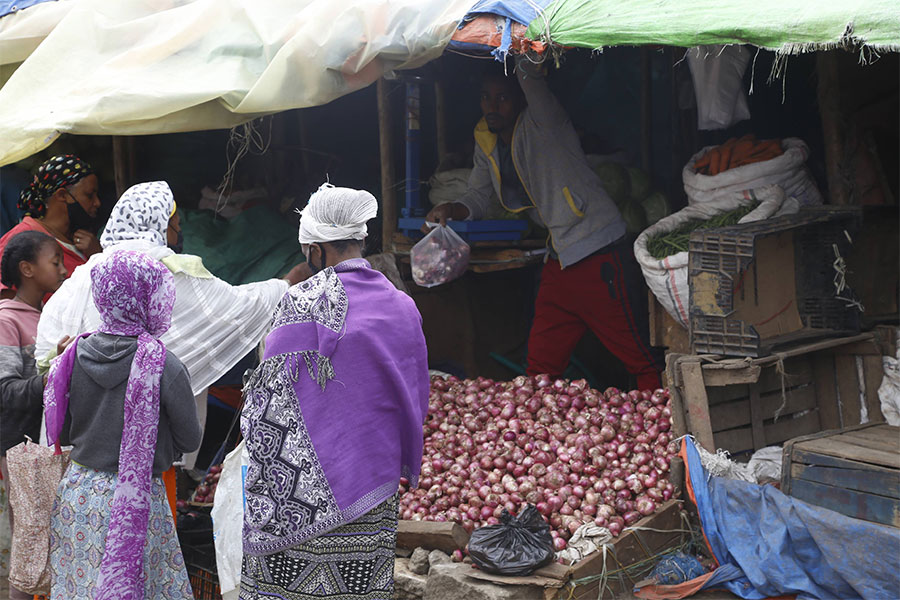
Agenda | May 17,2025
Injera is a luxury food item for Birtukan Mengesha, a waitress at Addis Abeba University student's lounge.
Besides the limited amount of tips she gets from the students and teachers, her monthly income is about 900 Br. Living in a Kebele house and not paying rent is an advantage, for she pushes through life supporting her father and daughter with the 12,000 Br her relatives from abroad may send during the three major holidays.
"Those are the times I buy teff," she said.
The gluten-free traditionally grown cereal crop teff, milled, fermented and baked to make a flatbread Injera, is adopted by almost all Ethiopians as a staple food. But Birtukan tries to manage her household by surviving off of bread made of maize or wheat in hope of making the teff flour last longer.
She had to lessen the amount she buys and settle for 80kg as the prices keep rising. She anticipates that the volume will further drop with the recent price increase that hit the capital a couple of weeks ago.
The price of teff has spiked with the price of a kilogram of teff showing up to 51pc increase from where it was a couple of weeks ago. The astounding prices have made local businesses that supply Injera to several institutions contemplate the idea of increasing prices and facing the probability of losing clients.
HBS Rohobot has been in the business of selling Injera to local consumers and distributing it to hotels and restaurants for more than a decade. HBS also takes pre-orders for gatherings such as funerals and weddings.
The owner, Bedilua Hailemariam, banked on the rumours that the price might increase, buying 10qtl of white teff with 65 Br a kilo that now hit the roof to 75 Br.
Bedilua claims she makes 800 Injera pieces from a quintal of teff void of additional inputs and sells one piece for 15 Br. She hires bakers on a contract basis and completes the production at her house near the CMC area.
She said the recent increase has made it impossible for her to stay in business without making price adjustments once she is out of stock.
"I'm constantly torn between adjusting the price and losing customers," she said.
Last week Ehil Berenda around the Merkato area ran out of white teff supplies. The hub of cereal crop distribution in the capital has other agricultural commodities traded as well with loading and unloading being the common scenery for a passerby.
A typical day at the millers in Casanchis area.
One of the wholesalers Mesfin Regassa has been in the business of selling cereal crops, particularly Teff for over three decades. During the peak season, he used to have up to 30qtl delivered to his doorstep every other day.
The shop which was usually packed with sacks of the seven varieties now has only five quintals that are not even considered first-grade. He sells the second-grade white teff for 68 Br a kilo claiming a one Birr profit margin.
He said he split the supply that made its way before the break of dawn with six other wholesalers.
"I was lucky," he said.
Magna (white teff) is preferred by most consumers having the highest price, out of the other common varieties, Melestegna, Sergegna and Qey (red teff). It grows mainly in highland areas. Qey teff is relatively less priced despite being considered to have higher iron content.
Mesfin claims that drivers that supplied him Magna teff from towns such as Ada'a town in Amhara Regional State were not able to deliver for security issues they kept encountering on the regional borders.
"Witnessing trucks with bulk amounts of teff has gotten rare," he told Fortune.
Truck drivers have been eyeing Wolenkomi town in Oromia Regional State instead, 60km from the capital, claiming the supply chain from Amhara Regional State was disrupted. However, wholesalers claim it is not enough to meet the demands of the capital.
The scarce stockpile has resulted in the price hike that made sustaining business difficult for millers.
Hassen Ibrahim got back from Ehil Berenda, the same day Mesfin received his five quintals from a truck. He started the milling business eight years ago with an initial capital of 50,000 Br around the Lafto area.
Hassen arrived early morning. Despite toiling around, he left disappointed unable to find the white teff he was looking for although he recalled it was sold for 64 Br a kilo a couple of weeks ago. As his stock is empty, he had to settle for Sergegna teff even though it is not his customers' preference. He was in awe to learn that the price was 65 Br a kilo from 43 Br in a couple of weeks, which translates to a three Birr profit margin.
"The labour costs, living expenses, and rental fees will not be covered," said Hassen.
Authorities held a meeting during the week blaming the scarcity for the price increment artificially created by retailers.
"We're also affected by the shortage," he said, puzzled about the accusation.
Hassen shared similar sentiment that there was an insufficiency of supply coming in.
The Amhara and Oromia regional states are the largest teff producers, with 21 million quintals and 27 million quintals production respectively in 2021. According to the data from the Ministry of Agriculture, up to 65 million quintals of teff are expected to yield from five regions this year, exceeding last year's production by eight million quintals.
Truck drivers distributing agricultural commodities from the regional states appear concerned about the security issues they have been experiencing on the roads.
Gebreab Alehegn has been transporting crops to the capital for the last ten years. He said the security issues between regional borders are escalating, claiming to have witnessed his peers expropriating their shipments and escaping with their lives.
He believes the scarcity is mainly driven by the ban imposed by authorities on cross-trading. However, the Amhara Regional State Communications Head, Gizachew Muluneh, argues otherwise.
"It's a baseless rumour," he told Fortune.
Although familiar with the security issues, Abita Gebyaw, communication head of the Amhara Regional State Trade Bureau, said there was no prohibition on the transportation of teff to other regional states. According to Abita, as it is not the season to spend on agricultural inputs such as fertilizers, farmers are relaxed, looking to sell for better prices.
The Regional Trade Bureau regulates close to half a million licensed traders. However, it has no mechanisms to collect data that pinpoints how distribution is affected, according to Abita.
The Addis Abeba Trade Bureau officials are aware of the complicated market scene. However, they refrain from commenting on the issue at this time.
Esayas Lemma, head of the crop development directorate under the Ministry of Agriculture, said the forecast shows increased production of teff because farmers used enough fertilizer and modified seeds on their lands.
However, the burden of inflation has impacted farmers who also have to buy household commodities and agricultural inputs. Over three million farmers grow teff on 2.9 million hectares of land, harvesting an average of 18qtl.
Bizuayehu Mulye, 49, lives in Bichena area in Amhara Regional State. He plants teff in August and harvests at the end of December with 4,000 farmers in the area.
Bizuayehu produced 26 quintals of white teff on three hectares of land, using 200kg DAP and UREA fertilizers per hectare. He claims production has declined by four quintals, due to unsuitable weather conditions.
He sold six quintals of teff for 5,700 Br to Ghion Union, which increased by 2,000 Br from last year.
A father of four, Bezuahyu, does not believe the price is high compared to the skyrocketing production costs such as fertilizer and pesticides trailed by the inflationary economy.
"I want to charge more if possible," said Bezuayhu.
Economists point the direction at the recent wheat export narrative that cornered farmers to sell their wheat produce at a lower price.
Shimelis Araya (PhD), an agricultural economist, believes farmers are eyeing the market with hopes that the scarce wheat supply in the market would lead to more teff demand.
The expert recommends officials disburse large amounts of wheat in the market and give consumers alternatives to stabilise the price as a short-term solution. However, Shimelis strongly believes boosting teff production should be the long-term plan advising consumers to develop a habit of including other crops in their meals.
Indeed, Injera remains lavish for members of society such as Birtukan until the dilemma between production and distribution gets addressed.
PUBLISHED ON
Mar 04,2023 [ VOL
23 , NO
1192]

Radar | Mar 12,2022

Fortune News | Sep 24,2022

Agenda | Sep 26,2021

Fortune News | May 15,2024

My Opinion | May 07,2022

Dec 22 , 2024 . By TIZITA SHEWAFERAW
Charged with transforming colossal state-owned enterprises into modern and competitiv...

Aug 18 , 2024 . By AKSAH ITALO
Although predictable Yonas Zerihun's job in the ride-hailing service is not immune to...

Jul 28 , 2024 . By TIZITA SHEWAFERAW
Unhabitual, perhaps too many, Samuel Gebreyohannes, 38, used to occasionally enjoy a couple of beers at breakfast. However, he recently swit...

Jul 13 , 2024 . By AKSAH ITALO
Investors who rely on tractors, trucks, and field vehicles for commuting, transporting commodities, and f...

Jul 5 , 2025
Six years ago, Ethiopia was the darling of international liberal commentators. A year...

Jun 28 , 2025
Meseret Damtie, the assertive auditor general, has never been shy about naming names...

Jun 21 , 2025
A well-worn adage says, “Budget is not destiny, but it is direction.” Examining t...

Jun 14 , 2025
Yet again, the Horn of Africa is bracing for trouble. A region already frayed by wars...